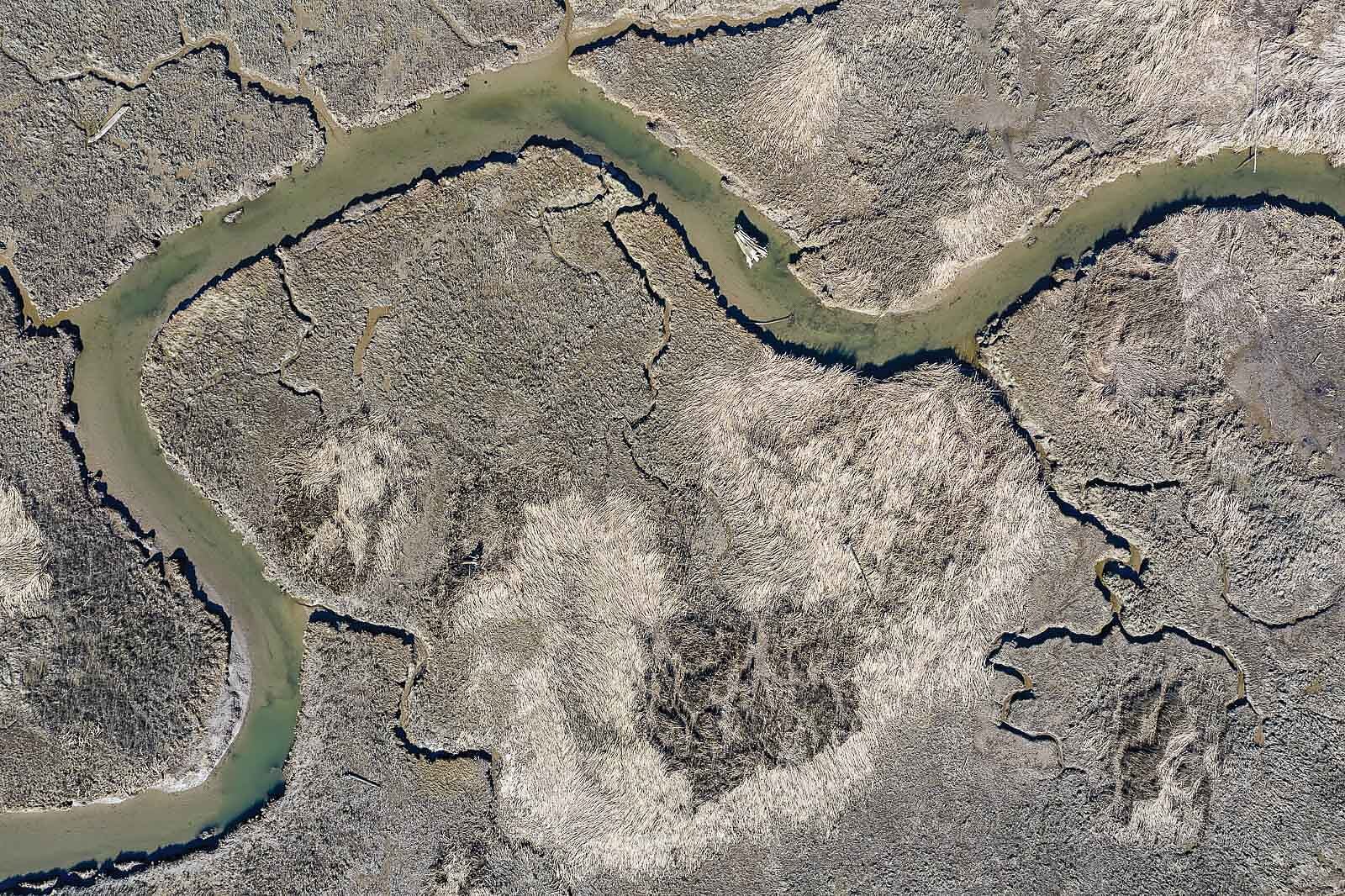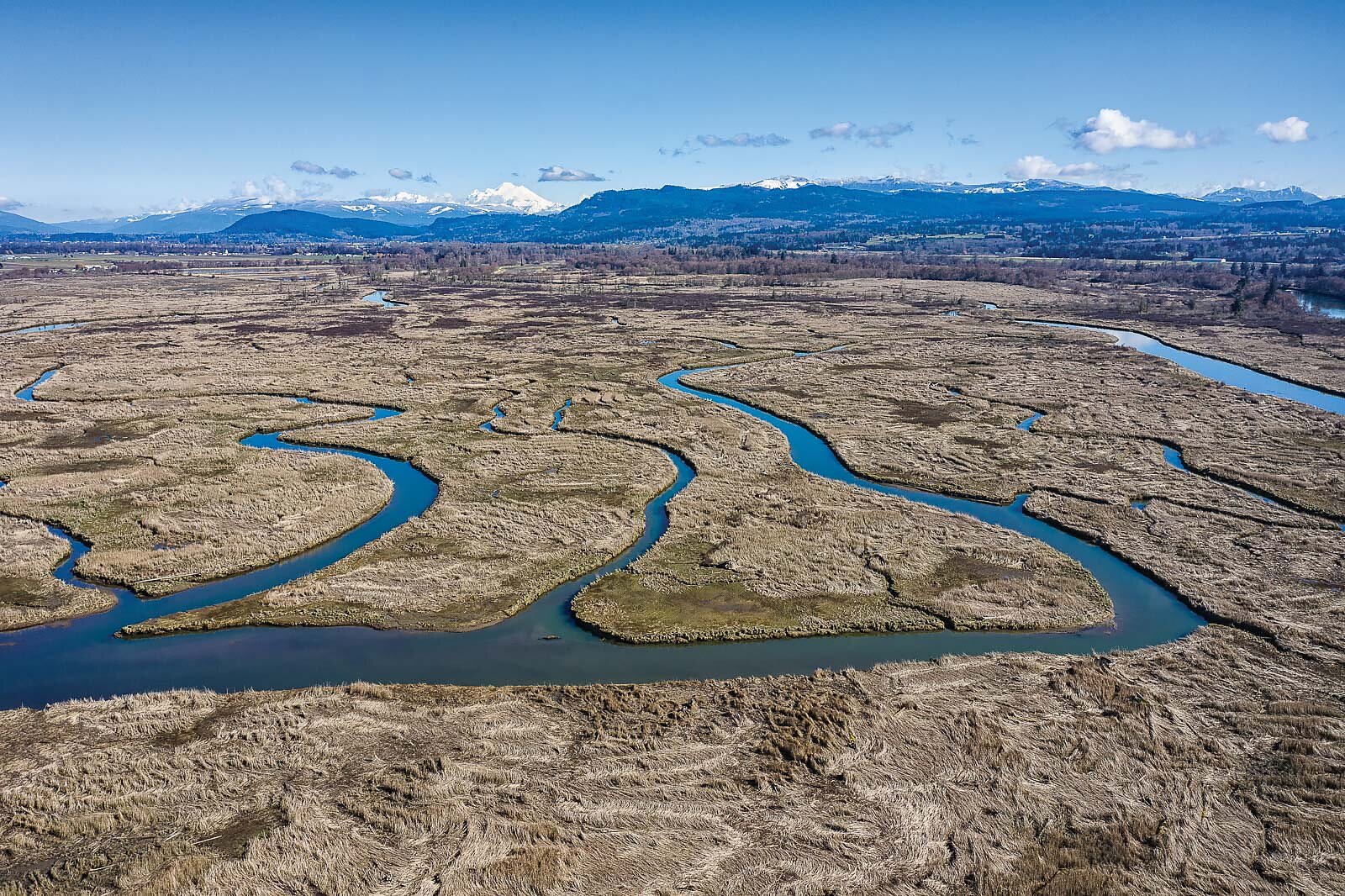
Donut Hole Debacle A River's Health in Flux
Words by Elizabeth Kimberly | Photos by Keith Williamson
An old friend once posed a provocative idea: that geographic borders be determined by watershed boundaries and not by arbitrary lines drawn on maps, such as the one that marks the 49th parallel between the United States and Canada.
They argued that this method of demarcation would make for less controversial water policies and fewer water wars. Management practices would be, as a result, designed with the entire watershed in mind. If this were the case, the proposed copper and gold mine in the upper reaches of the Skagit River would not be the cross-border debacle that it is today.
Transboundary or not, we’d still be dealing with a multi-stakeholder controversy. In 2019, Imperial Metals Corporation applied for a mining permit across a 14,000-acre sliver of unprotected land just north of the Canadian border, called the “donut hole”. With the proposal to drill mines up to a mile deep, and the potential for toxic slurries to spill downstream, the environmental consequences could be devastating. Even more, the donut hole is situated at the headwaters of the Skagit River. Downstream, in this case, is equivalent to the entirety of the Skagit watershed. From its source in southwestern British Columbia, the Skagit winds into the heart of North Cascades National Park, through the land of the Upper Skagit and Swinomish tribes, and ultimately into the Puget Sound. Within and alongside its pristine waters, the Skagit River supports endangered grizzly bear populations, northern spotted owl, bull trout, and all five species of native Northwest salmon, including the threatened Chinook.
Preliminary exploration drilling (which doesn’t require a permit) this past December confirmed the occurrence of gold in the donut hole, and Imperial Metals is currently still awaiting approval from the provincial government to set the project in motion. However, staunch opposition has halted progress. Since the proposal’s inception, a coalition of more than 200 conservation organizations, Indigenous communities, businesses and government agencies has banded together to campaign against the mining permit. They argue that the cultural, environmental and economic risks are simply too high.

One especially compelling piece of evidence strengthens their argument—Imperial Metal Corporation’s poor track record. In 2014, a dam breach at the Mount Polley mine caused one of their tailings ponds to pour 25 billion liters (the equivalent of 10,000 Olympic-sized swimming pools) of contaminated mine waste into the Fraser River watershed—one of British Columbia’s largest freshwater basins and the location of major salmon spawning grounds. And it doesn’t take a catastrophic failure to wreak havoc on an ecosystem; even in small concentrations, copper and heavy metal pollution associated with mining operations can leak into water and threaten salmon and bull trout.
For the Swinomish Indian Tribal Community, a federally recognized tribe descended from groups native to where the Skagit River meets the Puget Sound, the destruction of a healthy ecosystem in their waterways would be catastrophic. Last fall, the Swinomish Tribe’s governing body passed a resolution aimed at securing the denial of exploratory mining upstream. In the resolution, which was shared with Washington Gov. Jay Inslee and B.C. Premier John Horgan, the tribe addressed their legacy.
“The six wild salmon species that still call the Skagit River home have sustained the Swinomish Tribe’s people and ancestors since time immemorial, and are necessary for the Tribe’s culture, economy, spiritual and religious ceremonies, and the Swinomish Tribal Community’s way of life,” reads one section of the tribe’s letter.
A river’s path of least resistance often transcends geographic boundaries. If mining in the Skagit headwaters is approved, it’s not just the pristine old-growth forests and local bull trout population of the donut hole that will be at risk—it’s also the orca population in the Puget Sound, over 100 miles away, and the culturally significant chums that spawn downstream.